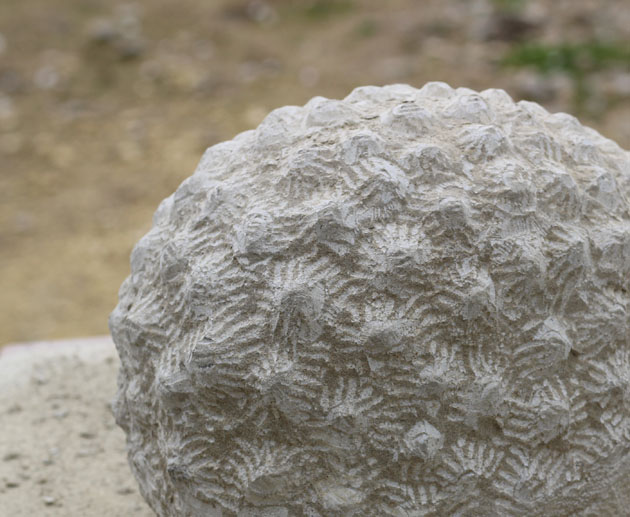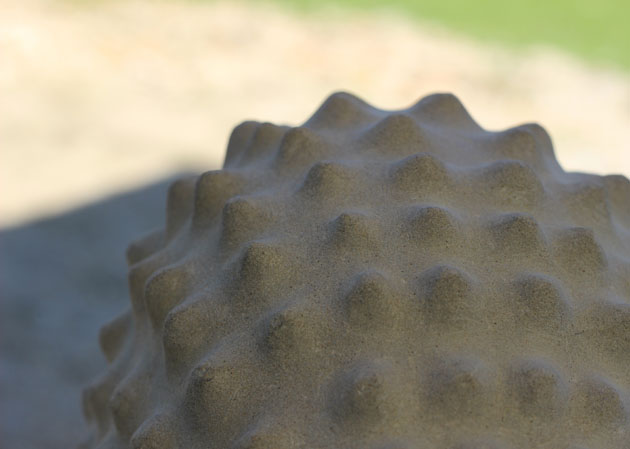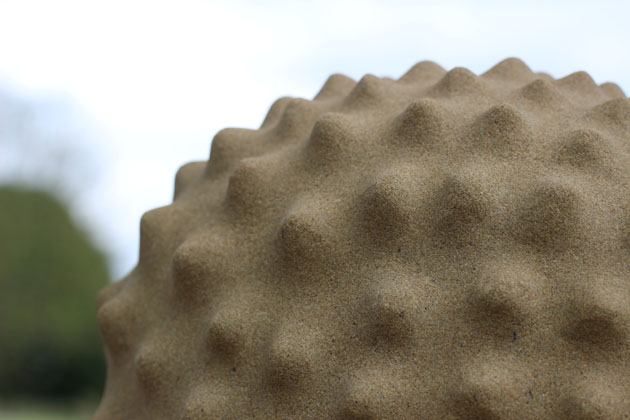Direct Carving in Stone

Direct carving, carving direct – ever since I picked up my first hammer and chisel I’ve been working stone in this way. I didn’t know it had a name, or that at one time it was considered revolutionary. I just took for granted it was the way sculpture came into being and was how everyone sculpting in stone worked.
Of course if I pop my head out of my workshop and look around, at other carving, famous works and pieces by unknown craftsmen, and explore stone carved sculpture through history I see another picture.

On Tuesday evening I thoroughly enjoyed an illuminating, and emotional talk given by sculptor Madeline Goold called ‘A Little Revolution – The Revival of Direct Carving in Stone’. The talk was organised by Helmsley Decorative and Fine Arts Society for their October meeting at Helmsley Arts Centre.
In her lecture Madeline described the ancient and Romanesque carving techniques and the Beaux Arts tradition and revealed the methods used by Eric Gill and Jacob Epstein. It was wonderfully highlighted, through her exploration and archive photographs, the changes in the working methods of these two sculpting ‘greats’, who had apparently known each other well, and worked together, significantly influencing one another.
I see now how it was a revolution, the Beaux Arts school originated around 1648 and was founded to educate the most talented students in drawing, painting, sculpture, engraving and architecture. The teaching focused on classical arts and architecture from ancient Greek and Roman culture. (Women weren’t admitted until 1897!).
At a point when Gill and Epstein worked together the preceeding 300 years or so had seen the making of sculpture as a process of elaborate preliminary drawings, models or maquettes and scaled plaster casts which were then copied in identical detail into stone by a team of expert stone carvers. Artists didn’t work the stone themselves, or perhaps can be credited sometimes with the last finishing off. So Gill and Epstein, followed by Henry Moore and Barbara Hepworth, were working in a brave, expressive way, and breaking with tradition.

When I see carved stone, so often the pieces that appeal the most, that move me, gives goose-bumps or bring tears, it is sculpture direct carved by the artist, direct worked, direct crafted – sculpture from pre-history, medieval times, and since the ‘Little Revolution’. From these carvings transmits an energy, rhythm and ‘aliveness’, a power rather difficult to define, but is most surely felt, and which can be absent from the manufactured and measured of the Beaux Arts tradition (though this sculpture has my awe and respect).
So what actually is Direct Carving – I borrowed the definition for this art term from the Tate.
Direct carving is an approach to making carved sculpture where the actual process of carving suggests the final form rather than a carefully worked out preliminary model.
Furthermore they say
This new approach was introduced by Constantin Brancusi from about 1906. Before that carved sculpture had always been based on a preconceived model. Often it was then actually carved by craftsmen employed by the artist. The marble sculptures of Rodin were made this way.
An important aspect of direct carving was the doctrine of truth to materials. This meant that the artist consciously respected the nature of the material, working it to bring out its particular properties and beauty of colour and surface. Direct carvers used a wide variety of types of marble, stone and wood. They kept to simple forms which respected the original block. Surfaces were kept uncluttered by detail in order to expose the material itself, and were often carefully polished to enhance the colour and markings. The results were often highly abstract.
Perhaps Gill and Epstein saw how Brancusi was working and were excited themselves to sculpt this way.
Looking at this definition, though largely I work this way, I usually have a good idea in mind of the shape I would like to carve and may even have done drawings of my subject matter. Perhaps I work more in line with the Oxford reference: Carving a sculptural design directly into a material, most usually stone, as opposed to producing it through a plaster (or other material) model.
Either way – stone is the originating material – and that is perhaps the point. I think in stone and see my shapes in stone, and may have something in common with Madeline’s way of working ‘it is about an expression in stone of …..’
